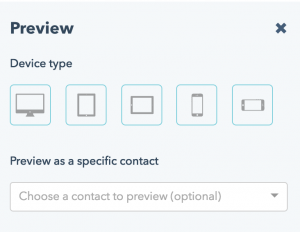
 Blog optimization is key to maintaining consistent traffic and engaging readers. Instead of simply posting and moving on, businesses should take time to optimize each post to ensure user satisfaction.
Blog optimization is key to maintaining consistent traffic and engaging readers. Instead of simply posting and moving on, businesses should take time to optimize each post to ensure user satisfaction.
It’s not just new posts that need optimization; older blog posts too should be revisited to ensure they continue to receive traffic. Here are some statistics from HubSpot that make a case for blog optimization.
Once you’re ready to optimize your blog, take a look at these technical and non-technical elements to consider.
Strong writing is critical. Blogs that ramble, go off topic, or don’t address a certain point will annoy readers. And since 43% of people admit to skimming blog posts (HubSpot), it’s important businesses employ a writer who knows how to capture the target’s attention. Not every blog article must be a literary masterpiece, but they must offer value to the reader. See the next point...
Address the buyer’s problems and interests. Does your content discuss potential problems or interests of your customer? Or, do you simply address a general audience? If it’s the latter, then it’s time to change your blog strategy. It’s important to talk to your buyer persona, not just to a large group of people, using a voice and tone that appeals to this niche group. With personas, embrace the needs, mindset, goals, obstacles, and opportunities relevant to your target audience.
Make sure the content is useful. If your blog isn’t getting many conversions, it might not be helpful content to your reader OR your call-to-action is misaligned with their needs. People look online to find answers to questions or learn more about topics, so if your blog pushes your company’s sales jargon too hard or just doesn’t take into consideration your potential client’s pain points, this could be why there is low readership. For content marketing, focus more on educating, inspiring, or helping your readers rather than pushing into a sale.

Keywords. There is much debate about the use of keywords, but, when done right, they can help optimize your blog. Select 1-2 medium to long-tail keywords (i.e., not overly broad terms like “technology” or “marketing”) and use them in simple, natural language in the following:


While this means your keywords are all over the place, don’t put them in places where it doesn’t sound natural. If you do this, search engines will dock you for keyword stuffing. Also, check to make sure there is some interest for the key phrases or core keywords that you are targeting.


Conversions. You want to make conversions as easy as possible for the reader, so this means putting a CTA at the end of your post. This could be:
 Example of a CTA
Example of a CTA
There are many different ways to get readers to convert, but what’s really important is that the CTA matches the blog content. You don’t want to push the reader to buy your product when they just landed on your site; instead, ask them for their email in exchange for an in-depth white paper on a similar topic.

Readability. Choose an easy-to-read font and be sure to include sufficient white space, so the viewer isn’t overwhelmed when reading your blog content. Make sure the font size is large enough and try to use bullets and headers when you can. Use images or video to break up large chunks of text and keep the reader engaged.
One quantitative measure of readability is the Flesch–Kincaid readability test. This score is baked into Yoast SEO tool, which makes for a streamlined way to track readability of blog content.

Another part of readability is mobile optimization. Many readers will use their phone to digest content, so be sure to check if the blog shows up in a proper format for mobile viewers. We use HubSpot to conduct mobile optimization tests. HubSpot allows for optimizing both the layout/UI and the content based on device.

Additionally, HubSpot allows for testing based on specific contacts, which is ideal when testing for personas (see notes above).
Linking. It’s important to link internally to other pages on your website so readers can find more information on a certain topic (and also so search engines credit you for this). Also, link to outside, expert sources (think New York Times, TechCrunch, etc.) to provide contextual references as well--making your content more interesting, likable, and resourceful for readers (increasing chances for inbound links). Don't include too many links or the blog looks spammy and Google will hate you.

Always use analytics to discover which blog content is highest performing in terms of conversions. Take an in-depth look at why that content in particular performed so well. Was it a technical element or a non-technical element? What did you do differently in this blog that you neglected to do in others? Identify which content items drove the most conversions and contacts.
We use HubSpot for testing content based on business goals. Specifically, we focus on blog articles that contribute, influence, or convert the most:
Sources
HubSpot: https://www.hubspot.com/marketing-statistics
by Jonathan Franchell, CEO of Ironpaper - For more tips and hacks: Need to remove a new line after h1 tags? Both web designers and SEO practitioners need to employ headline tags: H1, H2, H3 in several ways to improve web page structure and tag...

The Crowded Arena of the IT Marketplace Updated December 2024 The Information Technology (IT) landscape is experiencing rapid growth and intensifying competition. IT spending is projected to reach nearly 5.1 trillion U.S. dollars in 2024, a...

The marketing industry is transforming significantly due to generative AI and increasing market complexity. Gartner's prediction of a 25% decline in traditional search traffic suggests that the era of search engines is dying. AI tools, particularly...

Updated December, 2024 The field of digital marketing is evolving rapidly in response to new technology and changing buyer expectations. To help career-minded marketers, we’ve rounded up the top 10 skills needed to succeed in the field. These are...
